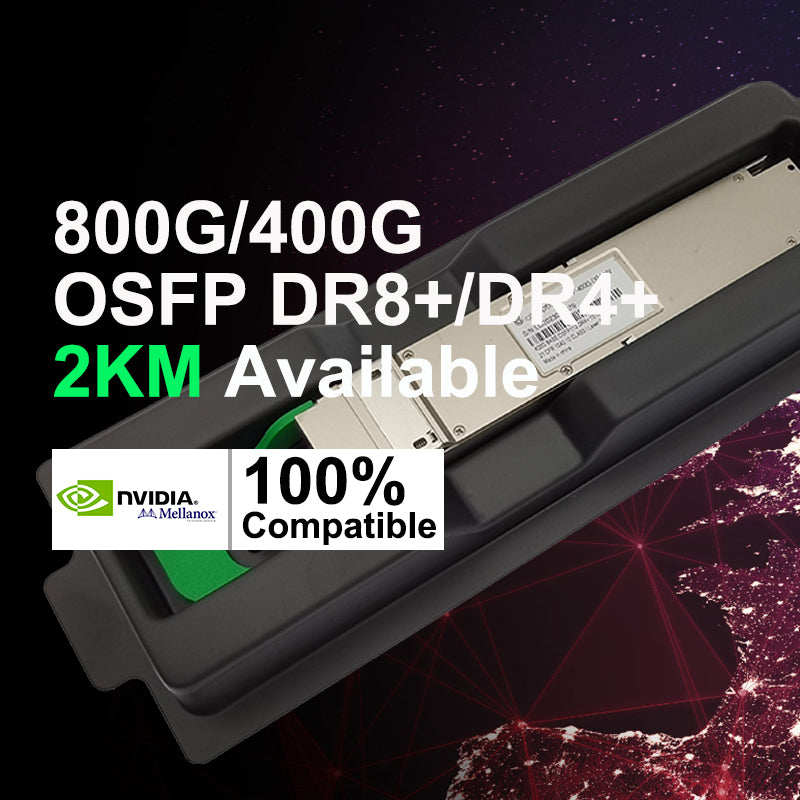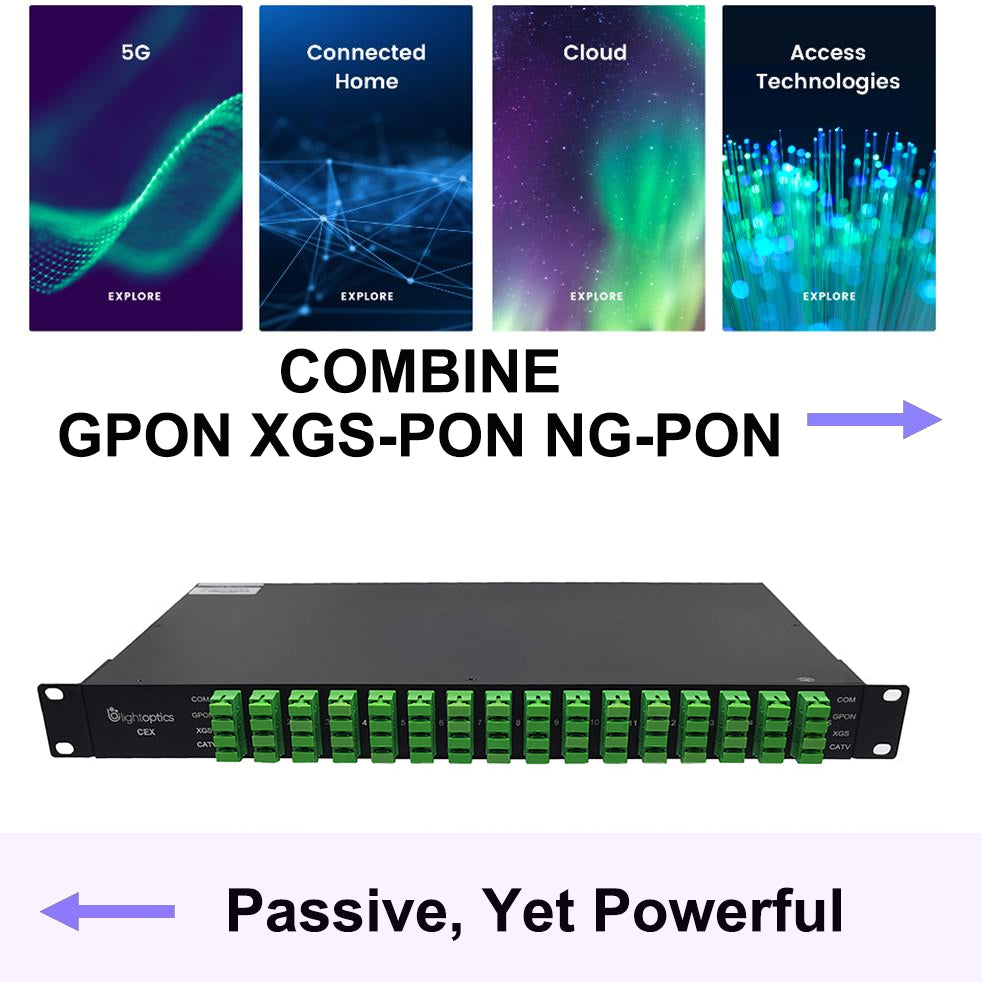Fibre Channel Transceiver VS Ethernet Transceiver
Fibre Channel Transceiver VS Ethernet Transceiver
For Fibre Channel infrastructures, FC transceivers are considered one of the indispensable components, while Ethernet transceivers plus Ethernet switches are the common matched combination when deploying the Ethernet network. These two types of transceivers are used for different applications, but what on earth their differences are? This article will make a comparison between Fibre Channel vs Ethernet transceiver.
What Is Fibre Channel?
Fibre Channel, also known as FC, is a high-speed network technology used to connect computer data storage to servers. It is frequently seen in use in commercial data centers. Commonly running at a Fibre Channel speed of 1, 2, 4, 8, 16, 32, and even 128 Gbps, it provides in-order and lossless delivery of raw block data in a storage area network (SAN). It handles high-performance disk storage for applications on many corporate networks, and it supports data backups, clustering, and replication.
It is named Fibre Channel rather than Fiber Channel because the technology supports both fiber and copper cabling. However, copper limits Fibre channels to a maximum recommended reach of 100 feet, whereas fiber optic cables reach up to 6 miles at a more expensive cost.
Fibre Channel does not follow the typical OSI model layering. It is split into five layers, namely, FC-0, FC-1, FC-2, FC-3, and FC-4. The Fibre Channel physical layer is based on serial connections that use fiber optics or copper between corresponding pluggable modules. Each module or optical transceiver may have a single lane, dual lanes, or quad lanes that correspond to the SFP, SFP-DD, and QSFP form factors.
What Is Fibre Channel Transceiver?
As a high-speed data transfer protocol, Fibre Channel (FC) can provide in-order, lossless delivery of raw block data. It is primarily used for transmitting data among data centers, computer servers, switches, and storage.
Fibre Channel transceivers, in accord with Fibre Channel Protocol (FCP), function as the interface between Fibre Channel systems, as well as the interface between optical storage network devices. They are mainly used for Fibre Channel storage network links in data centers. Featuring miniaturization and low power consumption, FC modules can satisfy the need for faster transfers of larger volumes of information in a lossless way. The Fibre Channel transceivers are running at the Fibre Channel speed range from 1Gbps to 128Gbps, with 256Gbps and 512Gbps on the road map. Their common form factors are SFP, SFP+, SFP28, SFP56, and QSFP28.
What Is Ethernet Transceiver?
Ethernet, also standardized as IEEE 802.3, refers to a computer networking technology widely used in local area networks (LANs) with good backward compatibility, higher bandwidth, and longer link distances, which is increasingly replacing the previous wired LAN technologies like Token Ring, FDDI, and ARCNET.
Ethernet transceivers are fiber optics that follow the Ethernet protocols to link hardware devices within a network by transmitting and receiving messages mainly for LAN situations. The frequently-used form factors are 1G SFP, 10G SFP+, 25G SFP28, 40G QSFP+, 50G QSFP28, 100G QSFP28, 400G QSFP-DD, and the corresponding transmission speed of Ethernet transceivers are ranging from 1G to 400G. The aforementioned models not only include some regular types of optical transceivers but also cover a wide range of WDM transceivers and BiDi transceivers.
Fibre Channel vs Ethernet Transceiver, What Are Their Differences?
- Protocols & Security
FC transceivers that belong to Fibre Channel Protocol do not follow the OSI model layering. While Ethernet transceivers are compliant with IEEE 802.3, which will realize packet-based physical communication in a LAN. It's a data-link layer protocol in the TCP/IP stack and belongs to the OSI model.
Fibre Channel is a natural security system. Storage Area Network (SAN) is isolated from the outside world, and the risk of storage network attack and data leakage will be reduced. As a result, adopting FC modules in storage networks is much safer. The TCP/IP protocol that Ethernet modules run will make the whole system vulnerable to more frequent attacks on account of the intervening of back-end administration done over the network.
- Reliability
Influenced by their protocols, the difference in transmission modes will cause diversity in transmission results. The compelling advantage of Fibre Channel over Ethernet is its better reliability. The lossless nature of FC has provided excellent performance in storage networking for a long time. That is to say, Fibre Channel modules can provide in-order and lossless delivery of raw block data while Ethernet modules can't.
Besides, Fibre Channel follows the SAN system, whereas Ethernet is used generally by NAS (Network-Attached Storage) systems. FC modules are designed for users that need fast, low latency reliability for block storage. If file-level storage access is required, then Ethernet modules will be considered.
- Transmission Speed
As mentioned in the introduction part, Fibre Channel and Ethernet transceivers' transmission speed range is different. Specifically speaking, FC modules can run at 1Gbps / 2Gbps / 8Gbps / 16Gbps / 32Gbps / 128Gbps at present. Ethernet modules can support a wider range of transmission speeds, including 10Mbps / 100Mbps / 1000Mbps and 10Gbps / 25Gbps / 50Gbps / 40Gbps / 100Gbps / 400Gbps.
Furthermore, the FC module's generational speed improvements normally occur in powers of two, from 1Gbps to 32Gbps respectively. The generational throughput improvements of Ethernet modules far outpace Fibre Channel ones. The new-launched 400G Ethernet QSFP-DD modules are nearly 400 times the initial 1G SFP modules. Ethernet fiber optic transceivers are more suitable for the increasing need for higher bandwidth.
- Applications
The difference between Fibre Channel and Ethernet transceivers also lies in their applications. Fibre Channel is one of the best ways to transfer large amounts of data between servers and storage devices. Thus, FC modules that connect to FC switches are mostly used in Fibre channels, storage networking, and Ethernet applications. Fibre Channel communications can run directly over Ethernet in the form of Fibre Channel over Ethernet (FCoE). The working scenarios of FC transceivers have been applied in large enterprises and data centers.
As an architecture developed almost four decades for LANs, the Ethernet transceivers are generally applied in LAN situations, sometimes with Wide Area Network (WAN) applications. Compared with the working scenarios of FC modules, the Ethernet modules can be seen in various situations from small-sized offices to hyper-scale data centers based on the requirement of the bandwidth.
- Matched Switches
The stable connection between transceivers and switches is vital when realizing the abovementioned application scenarios. Normally speaking, FC modules are connected to FC switches, whereas Ethernet modules and Ethernet switches are matched. No mixed usage situations.
As one of the leading choices for SANs, the traditional Fibre Channel networks contain Fibre Channel switches and Fibre Channel HBAs. FC switches are used to connect the storage to the SAN, while the FC HBAs are applied to connect the switches to servers. The variant of Ethernet network switches is wider, which reflects in the stackability, the ports number, the transfer rates that support, etc. When the latest 400G Ethernet fiber optic transceivers are connecting to a 400G network switch, 400GbE will be realized then.
Conclusion
Fibre Channel is deeply entrenched in today's big enterprises and large data centers, which makes FC transceivers significant. Ethernet shows its edge for the ability to run multiple storage and networking protocols, which leads to the wide usage of Ethernet network transceivers. Both Fibre Channel transceivers and Ethernet transceivers have relatively fixed users for their specific networking deployment.












